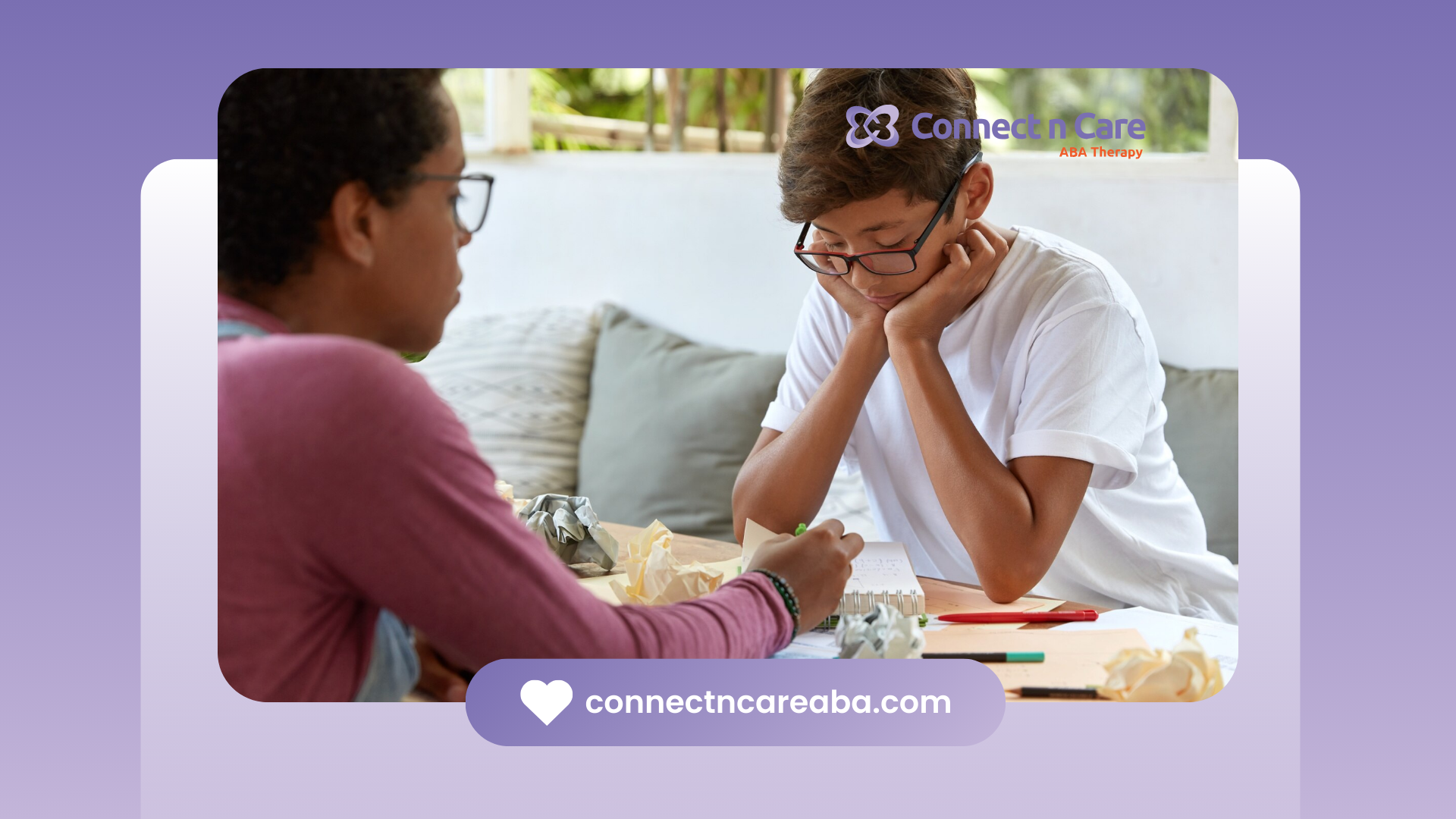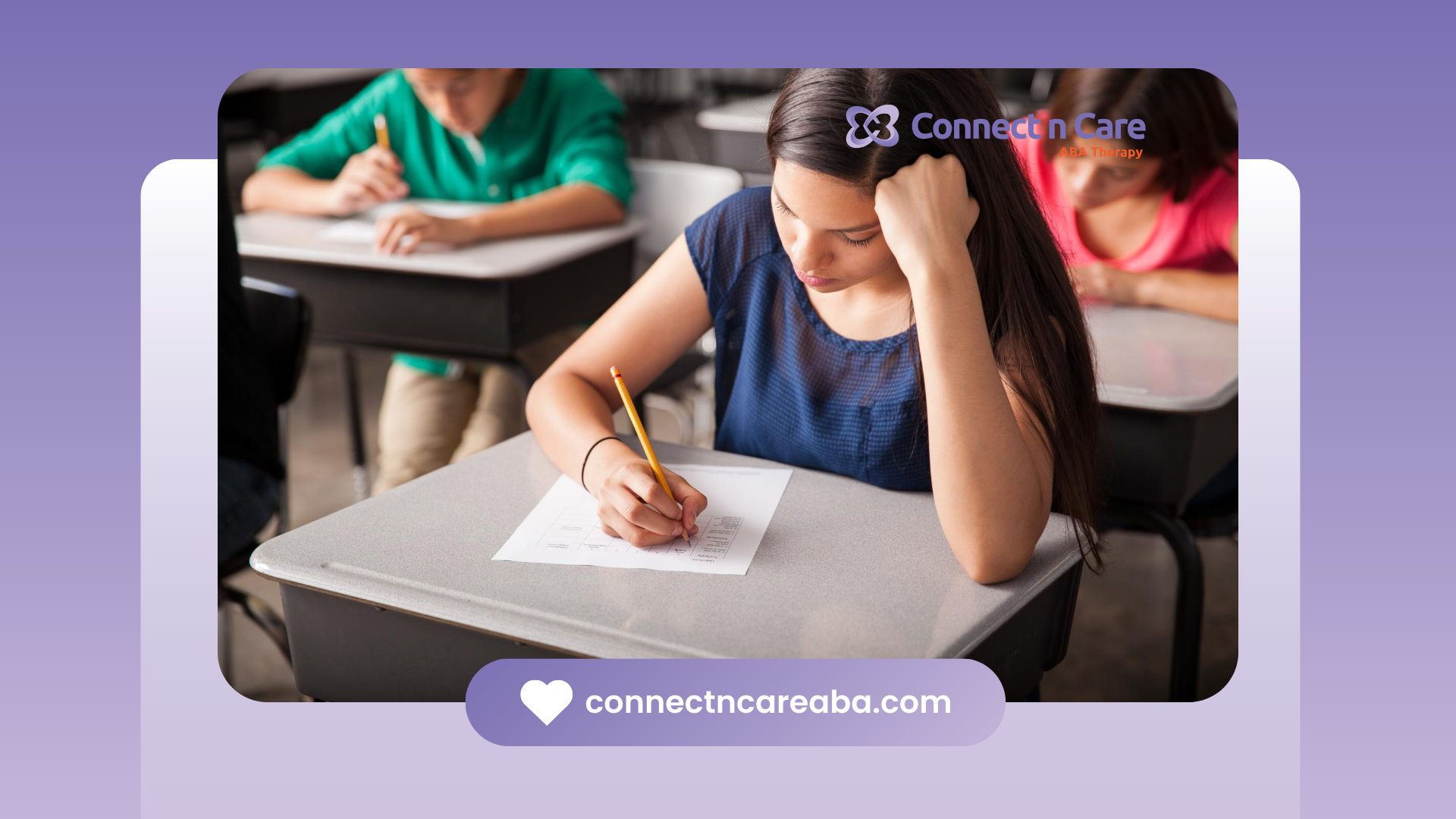Key Highlights
- The RBT Exam is crucial for aspiring Registered Behavior Technicians and focuses on the RBT Task List.
- Achieving a passing score demonstrates competency in areas like behavior analysis, intervention, and ethical conduct.
- The exam features multiple-choice questions, requiring both knowledge and application of ABA principles.
- The passing score is determined using a scaled scoring system, not a direct percentage.
- Preparation is key, encompassing thorough study, practice exams, and anxiety management techniques.
Introduction
A Registered Behavior Technician (RBT) is very important in applied behavior analysis (ABA). They work directly with people to carry out behavior plans made by certified experts. To become an RBT, you need to go through a certification process. This process includes taking a detailed exam given by the Behavior Analyst Certification Board (BACB). This exam makes sure that candidates understand the RBT Task List well. The task list has the necessary skills and knowledge for good and ethical practice in the field of applied behavior analysis.
Unveiling the RBT Certification Journey
The path to becoming an RBT includes steps to help people gain the skills they need for this job. This journey starts with a 40-hour training program led by a BACB-approved provider. In this training, you will learn the main ideas of ABA, ethical issues, and how to use the RBT Task List.
After training, candidates must pass a competency assessment. This assessment checks if they can use what they learned in real situations. It looks at skills in different areas from the RBT Task List, such as measurement, assessment, skill acquisition, behavior reduction, documentation, reporting, and professional conduct.
The Significance of RBT Certification in Behavioral Health
In the field of behavioral health, a Certified Registered Behavior Technician (CRBT) plays a very important role. As more people seek Applied Behavior Analysis (ABA) therapy, there is a growing need for skilled professionals to provide these services. Having an RBT certification shows that a person has met high standards and can use behavior analysis principles effectively.
This certification not only boosts the professional credibility of a behavior technician but also builds trust with clients and their families. It shows them that the technician has special training and follows ethical guidelines. Additionally, earning an RBT certification opens up many job opportunities in behavior analysis. It allows individuals to focus on specific areas or move up in their careers.
As a CRBT, a person becomes a key part of a team that works together to help individuals with different needs. The certification confirms their knowledge, skills, and commitment to offering quality care based on applied behavior analysis principles.
Essential Pre-requisites for RBT Certification
Before starting the RBT certification journey, people who want to become Registered Behavior Technicians need to meet certain requirements. One key requirement is to be very familiar with the RBT Task List. This important document details the skills, knowledge, and ethical standards expected of an RBT. Candidates have to show their skills during the competency assessment, which is a vital step in the certification process.
Knowing and following professional conduct is very important in this work. Those aiming to be RBTs should learn the ethical guidelines from the BACB. These guidelines stress the importance of client confidentiality, maintaining professional boundaries, and careful data collection. Following these ethical principles is essential for giving good and ethical care.
By meeting these requirements, future RBTs show they are serious about maintaining high professional standards and are dedicated to helping individuals in need of behavioral health services.
Inside the RBT Exam: A Detailed Overview
The RBT Exam is an online test that checks how well a person understands and can use the concepts from the RBT Task List. People who want to become RBTs can expect different types of questions. These questions may test their memory, application, and understanding of ABA principles. The exam usually has multiple-choice questions, so candidates need to think carefully and critically to choose the right answers.
To pass the exam, you can't just memorize facts. You need to have a solid grasp of ABA principles and be able to use them in real-life situations. The questions cover a range of topics, like measurement, assessment, skill acquisition, behavior reduction, documentation and reporting, and professional conduct and ethics. This ensures a complete check of the candidate's skills and knowledge.
Structure and Format: What to Expect on the Exam Day
The RBT Exam is designed to check a candidate's knowledge and their ability to use the RBT Task List. It ensures that those who pass are ready for the job's requirements. The exam typically includes multiple-choice questions. Each question has a stem (which is either a question or an unfinished statement) and several options, but only one option is correct.
The questions on the RBT exam are made to test a candidate's understanding of different behavioral concepts, principles, and methods. These questions require more than just memorization. Test-takers need to apply their knowledge to real-life situations, analyze data, and show critical thinking. The content includes several areas found in the RBT Task List, giving a full evaluation of the candidate's skills needed for ethical and effective practice.
This standardized exam format makes sure all candidates are judged fairly and evenly, no matter their background or experiences. It gives a standard measure of knowledge and skills. This way, the BACB can keep the RBT credential's value and ensure that people who have it have the necessary skills to offer quality behavioral health services.
Core Topics and Competencies Evaluated
The RBT Exam carefully checks how ready a candidate is to work in their field. It tests many areas from the RBT Task List. One important area is behavior reduction. Test-takers must show they understand ways to reduce or stop challenging behaviors. This includes knowing how to assess needs, use preventive steps, and apply strategies based on consequences.
Another important area is skill acquisition. Here, they must show they can teach new skills by using learning principles. Test-takers should know different teaching methods, like prompting, shaping, chaining, and reinforcement strategies. They also need to choose the right techniques based on each person's needs and style of learning.
The RBT Exam also checks a candidate's knowledge of measuring, assessing, and reporting. It also looks at professional conduct and ethical guidelines. These are important for sharing accurate data, making ethical choices, and keeping up high professional standards. Candidates must show they can observe well, collect and graph data, ensure client confidentiality, and follow ethical rules set by the BACB.
Demystifying the RBT Passing Score
In the past, many people thought that to pass the RBT exam, you needed to get at least 80% of the answers right. This might look like an easy way to measure how well someone did. But now, the RBT Exam follows a different system. The final score does not just show the number of correct answers. This method looks at different factors to see if someone has the skills needed to be an RBT.
Instead of using a set percentage, the BACB uses a scaled scoring system. This system thinks about how hard the exam is and how other test-takers performed. It is important to understand this system. Doing so helps you better understand your results and set real goals as you prepare for the test.
Understanding the Passing Criteria
Aspiring Registered Behavior Technicians often ask how many correct answers they need to pass the RBT exam. The RBT Exam does not use a fixed percentage like many other tests. Instead, it has a scaled scoring system. This means that the passing score does not directly match a specific number of right answers. The system looks at different factors to provide a fair and accurate assessment of skills.
To get RBT certification, candidates need to earn at least a score of 200 out of a possible 300. This score framework considers the exam's difficulty level. This ensures that passing shows a consistent knowledge level, no matter when the exam was done or which version was taken. This method supports fairness. It ensures that the RBT credential stays reliable, despite differences in difficulty among various exam forms.
Eager RBTs should not worry only about the number of correct answers. Instead, they should aim for a solid understanding of the RBT Task List content. A comprehensive study approach gives a deeper grasp of ABA principles and how to apply them. This understanding can help them do well on the exam and in their future jobs as RBTs.
Insights into Score Calculation and Interpretation
The RBT Exam uses a scaled scoring system. This is different from regular percentage scores. It helps to assess skill accurately and fairly. Understanding this system is important for reading your RBT exam results. You won't just get a simple percentage. Instead, you will get a scaled score, usually out of 300 points.
To find the passing score, the BACB uses the modified Angoff method. This method involves experts judging to set the passing mark. This makes sure it shows the same level of skills needed across different versions of the test. The passing score is the minimum knowledge and skills you need to do the job of an RBT well.
The scaled score also looks at how hard your specific test was. This helps make sure it is fair, as different tests can have varying difficulty levels. Because of this system, your scaled score fairly shows what you know and can do, no matter which exam you took.
Strategies for Achieving RBT Exam Success
Passing the RBT Exam takes a lot of commitment. You need a good study plan and effective preparation techniques. Start by approaching your studies in an organized way. It's important to understand the key concepts and also to see how they apply in real situations. Using a variety of study materials can really help you understand and remember the information better, which will help you succeed.
Active learning methods are very useful. You can summarize key concepts, teach them to friends, and work on practice questions. These techniques will strengthen your understanding. It’s a good idea to join study groups, visit online forums, or talk to experienced RBTs. This will give you new ideas and help clear up any confusion. Regular practice and steady effort will boost your confidence and raise your chances of doing well on the RBT Exam.
Effective Study Methods and Revision Techniques
To prepare well for the RBT Exam, you need strong study strategies and useful resources that help you understand and remember the material. Setting up a regular study schedule is very important. You should set aside specific times each week just for exam study. This organized plan keeps you moving forward and helps you avoid putting things off.
When you choose study materials, pick a mix of resources. This helps you understand the topics from different angles. Use detailed study guides that cover everything in the RBT Task List. You can also benefit from online courses, practice exams, and flashcards. These tools keep you actively learning and help reinforce key concepts. You might want to create a study group with classmates to talk about tough subjects, quiz each other, and support one another.
Using good review techniques is key to strengthening your knowledge and getting ready for the exam format. Make it a habit to go over what you've already learned to help with memory. Try to apply what you've learned to different scenarios in practice exams. As you study, find areas that need more work and spend extra time on those topics. Remember, being consistent, engaging actively, and planning well are vital for success in the RBT Exam.
The Role of Mock Exams in Your Preparation Plan
Integrating practice exams into your RBT Exam prep is very important. It helps you find what you don't know, manage your time better, and gain confidence. By mimicking the real exam experience, these practice exams show you what you do well and what areas need work. This way, you can adjust your study plan.
When you choose practice exams, pick reliable sources that match the RBT Task List and exam topics. Many online sites have RBT practice questions and full exams. Here are some benefits of adding practice exams to your routine:
- Finding Knowledge Gaps: Practice exams show where you struggle. This lets you focus on those topics during study time.
- Better Time Management: By mimicking the timed exam setup, practice exams help you learn how to pace yourself. You'll get better at answering questions quickly.
- Boosting Confidence: The more you practice with exam-style questions, the more comfortable you'll get with the format. This helps build your confidence for the real exam.
Regularly checking how you did on practice exams will help you improve your study plan. This will make your RBT Exam experience much better.
Common Pitfalls and How to Sidestep Them
Preparing for the RBT Exam can be tough. You might face problems like putting things off, not managing your time well, and feeling stressed. But by planning ahead and using good strategies, you can get through these issues and stay on track to reach your goal. The first step is to see these possible roadblocks.
Creating a clear study schedule is important. Break down the material into smaller parts that are easier to handle. Use active learning techniques to help you remember better. Take care of yourself, keep a positive attitude, and look for help from friends or mentors. This support will help you stay motivated and focused during your preparation for the RBT Exam.
Navigating Time Pressure and Avoiding Common Errors
Time management is very important for doing well on the RBT Exam. You have a set time to answer all the questions. So, it's key to create plans to pace yourself and avoid mistakes that happen when you hurry. Start with a good study plan. Make sure you have enough time to go over all parts of the RBT Task List. Focus on understanding the ideas rather than just memorizing facts.
Know how the exam works and practice answering questions within the given time. This will help you learn how to pace yourself. During the exam, do not spend too much time on any one question. If you are stuck on a question, mark it and go to the next. You can come back to the marked questions later if you have enough time.
Prevent careless errors by reading each question slowly. Pay attention to important words and phrases. Be aware of distractors, which are answer choices that might look right but are wrong. Take your time, stay focused, and do not rush through the exam to increase your chances of getting a passing score.
Strategies for Managing Test Anxiety
Test anxiety is something many people face. It can make it hard to do well on the RBT Exam. Using good methods to manage anxiety is very important. This can help improve your chances of success. Try relaxation techniques like deep breathing, meditation, or progressive muscle relaxation. These can help calm your nerves before and during the exam.
Keep a positive mindset and think about your preparation. Think about the hard work you have done. Go into the exam with confidence. Don't engage in negative self-talk; instead, use encouraging thoughts. Make sure to get enough sleep and eat healthy meals before the exam. This is key for your brain function and keeping anxiety low.
If you start feeling overwhelmed during the exam, take deep breaths. Focus on staying calm and centered. Divide the exam into smaller parts to make it easier. Celebrate your progress as you go. Don’t compare yourself with others in the room. This could make your anxiety worse. Trust in your preparation, stay positive, and believe you can succeed.
Beyond the Exam: Understanding Your Results
After you take the RBT Exam, you will wait for your results. This waiting time can be filled with excitement. While you wait for your official score report, think about your experience. Prepare yourself for any results.
Consider the parts of the test you felt good about and the parts that were hard for you. Reflecting on this can help you study better in the future, no matter what your score is. Keep in mind that becoming an RBT is a learning journey. Every step you take helps you grow in your career.
Decoding Your RBT Score Report
Once you get your RBT score report, take some time to look it over. It has important information about your performance. It shows what you did well and what you still need to work on. The report breaks down how you did in different areas. This can help you understand your knowledge of the RBT Task List.
Pay close attention to the sections where your score was below the passing level. These are the areas you should study more to understand better. Use the feedback in the score report to create a clear study plan for your next attempts. Identify areas where you can grow your knowledge and skills as you start your RBT career.
Remember, the score report is not a reflection of your value. It is a tool for your growth. Try to learn from your experience, whether you passed or need to take the exam again. Think of the score report as a guide to help your professional development and improve your ability to offer ethical and effective behavior analytic services.
Steps to Take if You Need to Retake the Exam
- If you did not pass on your first attempt, don't feel sad! It is common to try more than once to pass the RBT Exam. Use this chance to grow and make a good plan for better chances of success on your next attempts. Look closely at your score report and see where you needed to do better.
- Use this information to make a study plan that focuses on the hard parts. Get extra help from your supervisor, mentors, or study groups to clear up any confusion. Think about using different study materials, like online courses or practice exams, to strengthen your knowledge and practice using ABA principles in various situations.
- Remember, every attempt gives you valuable experience and helps you learn more about your study style. Stay strong and keep a positive mindset. Approach each attempt with new energy and determination. Don’t be afraid to ask for help from those who have already succeeded with the RBT Exam.
Conclusion
Understanding the RBT passing score is important for your success in the behavioral health field. By exploring the key requirements, test format, and effective strategies, you can approach the RBT certification process with confidence. Be ready to read your score report and use good study methods. It's also important to handle test anxiety well. Remember, being persistent and dedicated will help you avoid typical problems and reach your goal for the RBT exam. Stay focused, and success will come. If you want more help or resources for RBT exam prep, feel free to ask for support.
Frequently Asked Questions
What is the minimum score needed to pass the RBT exam?
The RBT Exam does not rely on a certain number of correct answers to determine if you pass. Instead, it uses a unique scoring system. To pass the RBT exam, you need a score of 200 or more out of 300, even for your first try.
How frequently are RBT exam scores reviewed or adjusted?
The Behavior Analyst Certification Board (BACB) often checks and changes how scores for the RBT exam are figured out. They also update what is needed to pass the exam. This way, the exam matches the latest research and stays at a consistent level of difficulty.
Can I retake the RBT exam if I fail on my first attempt?
Don't worry if you don't pass the RBT Competency Assessment the first time. You can try again! Many future behavior technicians see that taking it more than once boosts their chances of success.
How long does it take to receive the RBT exam results?
You will receive your RBT exam results soon. Your official score report will show your performance and if you passed. You can find it on the Pearson VUE website within a few business days after your exam.
Are there any official resources recommended for RBT exam preparation?
To get ready for the RBT exam, there are many study materials and online courses you can use. These resources give you valuable insights about ABA therapy concepts. Still, the BACB does not support any specific study material or company.









